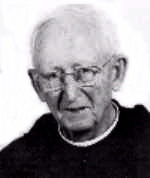
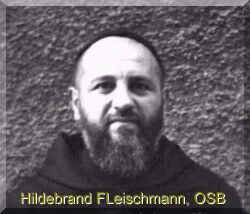
The Project This is a study of various public prayer forms known as breviaria parva ("short" or "little" breviaries), as they came to be used in this century, and in particular, here in the United States. While modeled on the official corporate and public prayer book of the Roman Catholic Church, known currently as the Liturgy of the Hours (and also known by several other names, such as the Divine Office, the Roman Breviary, the Office, etc.), the short breviaries are unique forms, and for the most part, specific to the 20th century. Most of them are considered by-products of the 20th Century "Liturgical Movement".
Both corporate and individual prayer have been a required and vital part of Catholic life since the start of Christianity. The most obvious manifestation of Catholics praying as a community is when they gather for and celebrate the Eucharist, known as the Mass. Other sacramental celebrations (Confirmation, Matrimony, Penance, Orders of deacon, priest and bishop, Anointing of the sick and viaticum, and Eucharist) also witness a community responding to its Creator.
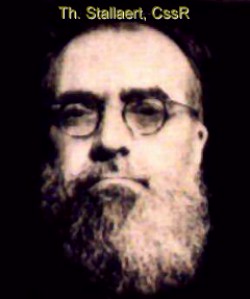
|
All the hours include psalms, canticles, biblical and other readings, prayers
and hymns, and - as corporate or common prayer - are structured
by their nature, to be prayed by more than one person. When the Divine
Office (under its various labels) is not possible as common prayer,
it can, and should (sometimes must, in the case of some individuals),
be prayed alone. What is unique in this prayer, prayed alone or with others,
is that it offers a strong sense of belonging to the larger Christian community.
For Catholics, this means belonging to the Mystical Body, which simply
means that Christ, as head of the Church, is present in the entire Catholic
community, and all, as one body, offer worship to the Father.
As the church's "official" prayer, it is mandated for several groups of "professional" Catholics: the clergy, for one. Monks and enclosed (cloistered) Nuns are also obligated to this prayer, though some monks and all Nuns are technically not "clergy" but "lay" persons. Many "active" communities (teaching, hospital, etc.) of religious Sisters and Brothers are also obliged to corporate prayer, but their obligations originate in their own by-laws (the "Constitutions" of the various groups). Additionally, there are lay persons who have affiliated themselves to one of the Orders (such as the Franciscans, Carmelites, Dominicans, etc.) in what is called a "Third Order", and these groups, as well, are obliged to corporate prayer by their "rule" or other formal legislation. The lay person, the "average" Catholic, is not obliged, but encouraged, instead, to make use of the office. In the earliest centuries of the Church, lay persons were expected to be present, whenever possible, at parish (or other local) celebrations of corporate prayer.
The Benedictine Abbey of En Calcat
|
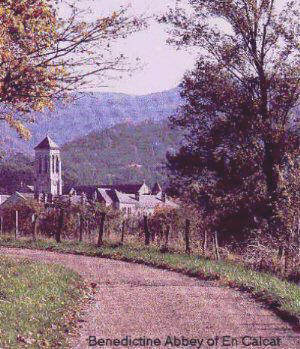 The Benedictine Abbey of En Calcat These groups of people: active communities of Sisters and Brothers, members of Secular Institutes, other societies, Third Order members and lay persons made great use of the breviaria parva in this century. There are cases, however, where a group or an individual has made use of the complete official prayer, either prior to or after the Council, but these are exceptions rather than the rule.
|
|
|
|
The prayer of these varied breviaries, the "office", is a non-sacramental prayer, yet very much a part of what comprises "Liturgy". The different sections (called "hours") mark particular moments of the day: morning, midday, evening and night.
|
The nature of short breviaries
How do we describe the various breviaria parva? Perhaps by their common characteristics:
(Yet, all of the short breviaries in this study which were available prior to 1963 were given "ecclesial" status by the Church through # 98 of the Second Vatican Council's Constitution on the Liturgy, issued in November, 1963. This verified that those who prayed from the short breviaries were indeed praying the Liturgy. Prior to this, the short breviaries were considered essentially as devotional prayer forms and not at all liturgical, even though modeled on the complete Divine Office.)
|
||
|
See Additional People and Places involved in the creation of Short Breviaries. Each text had
a different approach to common prayer, and groups or individuals could
choose which texts best met their needs. While it is true that there have
always been groups and individuals eager to pray the complete office, the
Liturgical Movement encouraged the development of these grass roots texts,
and particularly, since Pius XII's Encyclical Mediator Dei in 1947,
reasserting the wish of the Church that everyone participate in common
liturgical prayer, texts multiplied in many countries. Several varieties
of short breviaries were available, each similar to and distinct from,
each other. And all, to a lesser or greater degree, were modeled on the
"official" book.
|
|
This study analyzes the breviaria parva used in the United States in this century, listed in the order of their appearance. At the same time, reference is made during the course of the study to the models they are based on or translated from, where that is the case, and regular reference will be made to the parent model, the official Divine Office, in its various expressions (e.g., Roman Breviary, Monastic Breviary, Carmelite Breviary, etc.) Since the advent of the new Liturgy of the Hours, termed "official", it seems that there have been no attempts to seek "official" approval for newly composed breviaria parva texts. Although new short breviaries could be prepared, so long as they contained the necessary elements of the Liturgy of the Hours, the current process requires that a book be presented to the various national conferences of Bishops, and then to the Roman authorities for approval. With these various requirements comes the additional requirements of translation permissions, style. For example, only the "Grail" translation of the Psalms may be used in any office. The current group of "approved" texts are simply excerpts from the Liturgy of the Hours, receiving approval from a national Conference of Bishops with a "concordat cum originali". While there are new structures and texts which have no approval and/or did not seek approval, these are considered "unofficial", and may not be used as corporate and public prayer. In the United States, in two cases, at least, attempts at distribution of such texts through the regular channels met with strong opposition from the Conference of Bishops. It appears that the only way a text may considered "ecclesial" is if it is no more than an excerpt from the official book. While it appears that The Little Office of the Blessed Virgin Mary, arguably the oldest and most popular of the "short offices" has remained (although re-edited structurally and textually to correspond to the format of the current Liturgy of the Hours), the only other short breviary from the pre-Vatican Council period to "survive" is the successor to Officium Divinum Parvum (itself a successor to an earlier text issued in 1933 called Volksbrevier), now called Christuslob, in use in Germany, though it, too, has been revised to conform somewhat to the current official texts. There is yet
another common denominator in the creation and development of office texts
for English speakers of the 20th century: nearly every English text
or translation listed has been influenced, in one way or another, at some
stage of its development, by the Benedictine Nuns of Stanbrook
Abbey in Worcester, England. Their contributions to the world
of liturgical texts have been extraordinary, and a part of their vast work
is given an overview on a separate page.
|
St. John's Abbey Church
Collegeville, Minnesota
Each "short" breviary will be discussed in the
following areas:
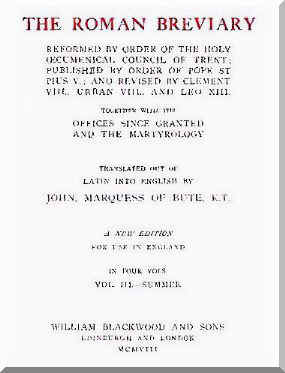
(Title page of the translation of the Roman Breviary by the Marquess of Bute - second edition, 1908.) |
| The "Overview" will become
one of the book's appendices....
A " Breviary texts overview " is provided here, and it offers essentially a snap shot view of all the texts, whether official, approved or non-official as they were and are used in this country during this century. The list is, of course, incomplete. When the book is completed, it will stand as one of its appendices. It is attached for your convenience. Every work in progress is just that: in progress, and more often than not, has room for improvement. I am hopeful that some will, when the book is completed and read, have the opportunity to experience another rich period of a variety of new office texts. At the same time, recognizing that the hope of the Liturgical Movement in this century, and the goals of the Second Vatican Council's reforms in terms of wider use of the liturgy of the hours, some will find ways to open up the riches of the various offices to those who, even now, are unfamiliar with the Liturgy of the Hours in any of its forms.
|
Return to Main Page

